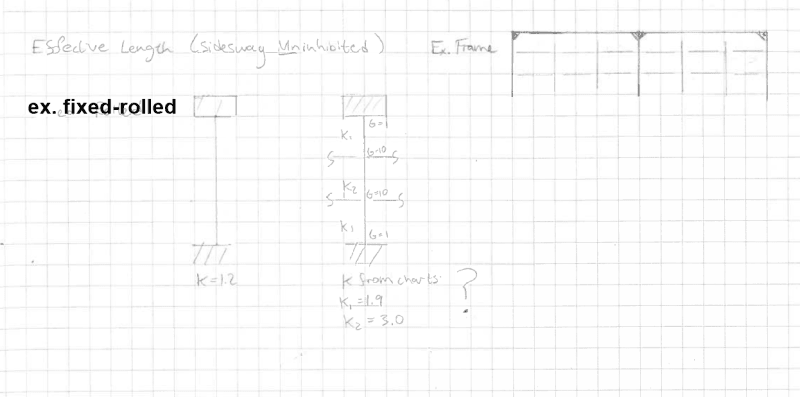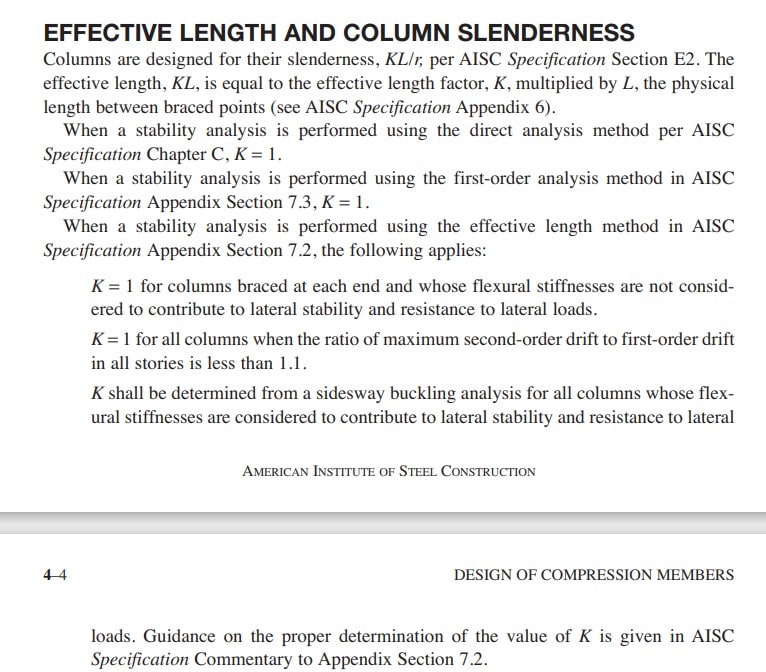Human909 said:
The whole reason why this is being discussed is because you seem to not acknowledge that k<1 is a realistic possibility and that using k<1 can significantly increase your calculated capacity.
I don't seem to not acknowledge. I full on do not acknowledge.
I don't agree with the "significantly" increase. And it's not all that realistic, either. As I've stated before, perhaps not as clearly as possible, the effect of end restraint on a pin-pin column is not dramatic. Not for realistic scenarios. Even if you went with inelastic G factors. Even with a "fixed" base (that's not justified by any research).... I don't see a huge difference between k= 0.85 and 1.0, (particularly not when some newer engineer is going to see this thread and think a pin-pin column can realistically be justified for K= 0.5 when it can't. ever. happen.)
I'd also suggest that the more you shave/cheat the K factor on the pin-pin columns in the story, by using a K that's less than 1, the more you need restraint from the framed columns/lateral system/diaphragm, and that's potentially beyond the notional loads we impose to account for those forces. Use of K< 1 also doesn't seem justified (from the 14
th Steel Construction Manual).
The key issue with the third option, is "columns whose flexural stiffnesses are considered to contribute to the lateral stability and resistance to lateral loads. These gravity only columns don't seem to satisfy that requirement. That would seem to indicate that the gravity columns have to be in the lateral system, at which point you might be able to computationally justify a K less than 1.0 (I believe this has shown up, analytically in the Ziemian thesis.)
I have some doubts here, that a) K<1 is allowed in the analytical procedures, b) K<1 produces meaningful steel savings (even so, "savings" that may be eroded by stiffeners being needed). This approach seems to be outside the specification.
I was going to put in an example, here, but I think that's not relevant until a) is overcome. I also have some questions regarding that example to resolve, unrelated to K factor.



